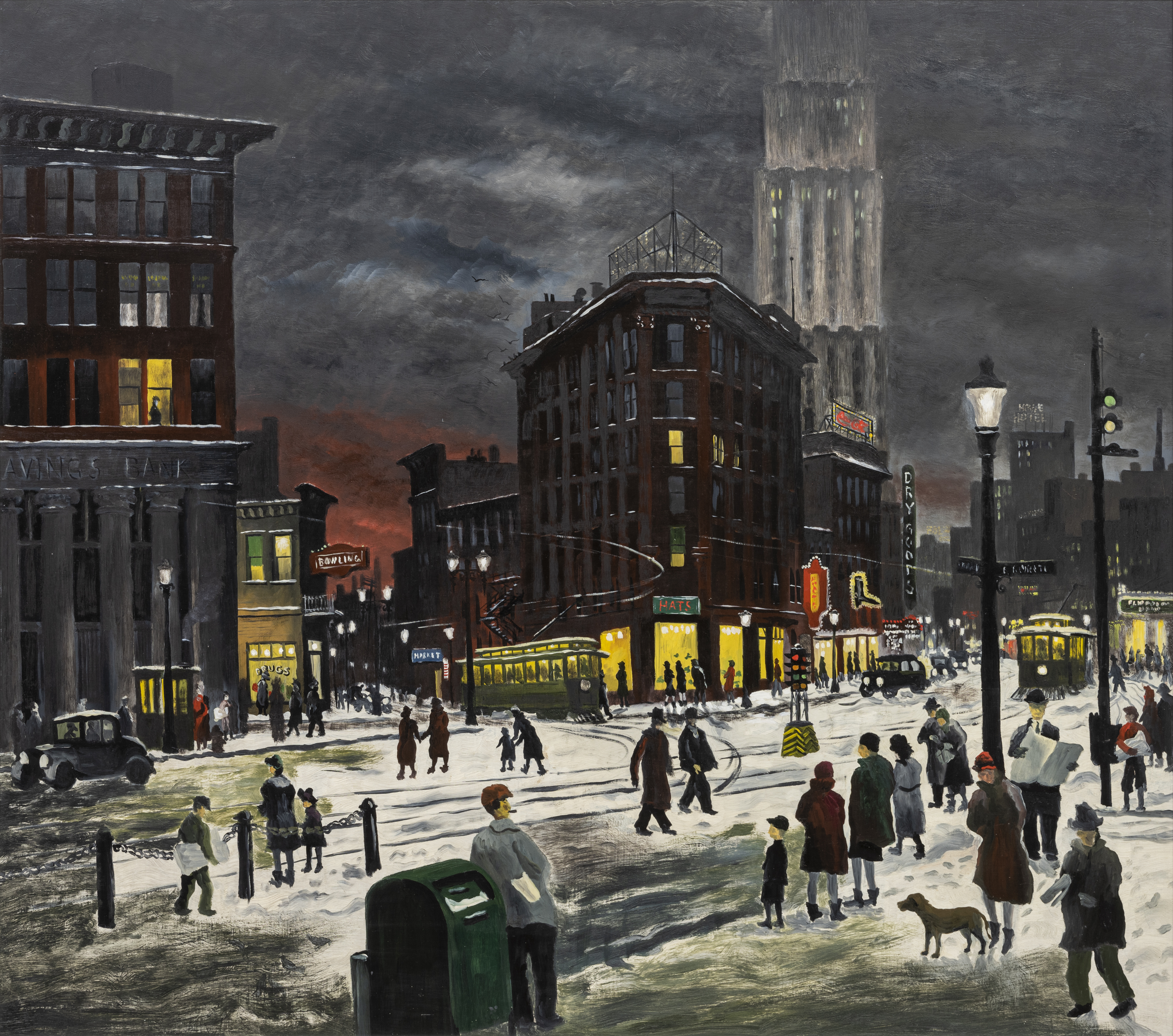Raphael Gleitsmann
(Dayton, Ohio, 1910 - 1995, Akron, Ohio)
Winter Evening
c. 1932
Oil on fiberboard
39 x 44 in. (99.1 x 111.8 cm)
Collection of the Akron Art Museum
Gift of Joseph M. Erdelac
1981.26
More Information
Once known as 'Big Town', this painting documents Akron’s bustling Main Street in the 1930s. Akron and the rest of the nation was suffering an economic depression, but Gleitsmann created a cheery scene by painting animated figures, chugging street cars and patches of bright yellow light radiating from building interiors. Although he received informal art instruction from his friend Paul Travis, Gleitsmann was essentially self-taught.

